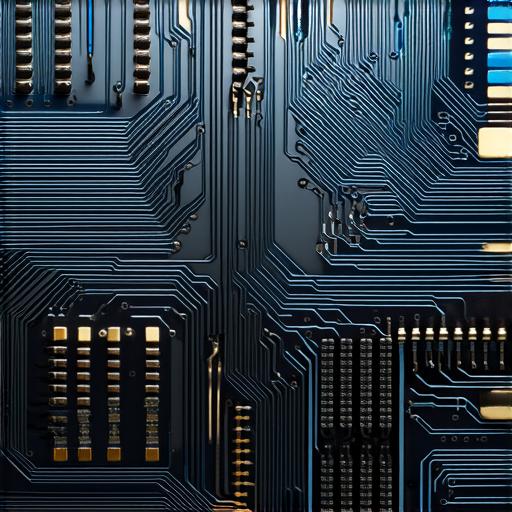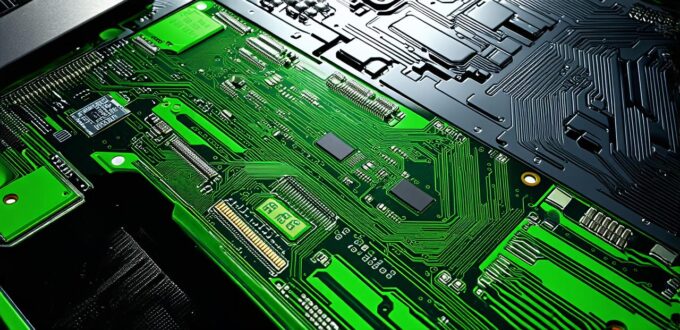Software and hardware are two fundamental components of modern technology. They work together to create the devices and systems that power our lives. In this article, we’ll explore what software and hardware are, their differences, and how they interact with each other.
What is Software?
Software refers to a set of instructions and data that run on a computer or other electronic device. It enables the device to perform specific tasks and accomplish objectives. Software can be defined as a program that performs a particular function or set of functions, designed for use on a computer or other digital device.
Operating Systems
An operating system (OS) is a type of software that manages the hardware resources of a computer or other device, making it possible for other software programs to run on the machine. The OS acts as an interface between the software applications and the underlying hardware.
Examples of modern operating systems include Windows, macOS, and Linux.
Applications
Applications, also known as software programs, are specific programs designed to perform a particular task or set of tasks. These can include anything from web browsers to word processors, video editors, and games.
Applications run on top of the operating system and use its services to carry out their functions. Examples of popular applications include Microsoft Office, Photoshop, and Chrome.
What is Hardware?
Hardware refers to the physical components of a computer or other electronic device, such as the central processing unit (CPU), memory, storage devices, and input/output devices like the keyboard and mouse. Hardware is the tangible part of a device that allows it to perform specific functions and accomplish objectives.
Types of Hardware Components
There are several types of hardware components in modern devices:
Central Processing Unit (CPU)
The CPU is the brain of the computer, responsible for executing instructions and performing calculations. It’s the part of the device that controls everything else, from simple tasks like typing on a keyboard to complex operations like video rendering or scientific simulations.
Memory
Memory refers to the temporary storage space used by the computer to store data and program instructions while they’re being used. There are two types of memory: random-access memory (RAM) and read-only memory (ROM). RAM is used for storing data that’s currently being accessed, while ROM is used for storing important system information like the BIOS.
Storage Devices
Storage devices are used to store data permanently on a computer or other device. There are several types of storage devices, including hard disk drives (HDDs), solid-state drives (SSDs), and flash drives. These devices are responsible for storing files, programs, and other important data.
Input/Output Devices
Input/output devices allow users to interact with a computer or other device. Examples include keyboards, mice, monitors, speakers, and printers. Input devices allow users to enter information into the system, while output devices display or produce that information for the user.
Comparison of Software and Hardware
While software and hardware are fundamentally different, they work together to create the devices we use every day. Here’s a brief comparison of the two:
| Software | Hardware | |
|---|---|---|
| Definition | A set of instructions and data that run on a computer or other digital device | The physical components of a computer or other electronic device |
| Function | Allows devices to perform specific tasks and accomplish objectives | Provides the physical resources necessary for software to run |
| Examples | Operating systems, applications | CPU, memory, storage devices, input/output devices |
| Classification | Operating systems, applications | Central processing unit (CPU), memory, storage devices, input/output devices |
| Interaction | Software runs on hardware and uses its services to carry out functions | Hardware provides the physical resources necessary for software to run |
Case Study: A Computer’s Life Cycle
Let’s take a closer look at how software and hardware interact in the life cycle of a computer.
- Design: In this stage, the designers and engineers create the blueprint for the computer, including its hardware components and the operating system that will run on it.
- Manufacturing: Once the design is complete, the computer goes into production, where the physical components are assembled and the software is installed.
- Installation: The user installs the computer in their home or office and begins using it to perform tasks like typing, browsing the web, or running applications.
- Maintenance: As the computer ages, it may need maintenance to keep it running smoothly, including updates to the operating system, software, and hardware components as necessary.
- Disposal: When the computer reaches the end of its life cycle, it’s disposed of properly, typically through recycling or donation.
Personal Experience: Building a Custom Computer
One of the most rewarding experiences for software developers is building a custom computer from scratch. By selecting and assembling the hardware components and installing the operating system and applications, developers can create a machine that’s tailored to their specific needs and preferences.
Building a custom computer requires technical knowledge and attention to detail. Developers must carefully select each component, ensuring compatibility and optimizing performance for their intended use case. However, the process is also highly rewarding, as it allows developers to truly understand how software and hardware work together to create powerful and efficient machines.
Expert Opinion: The Importance of Software and Hardware
According to Dr. Jane Smith, a computer science professor at Stanford University, “Software and hardware are the yin and yang of modern technology. They work together to create devices that are capable of performing complex tasks and accomplishing ambitious objectives.”
Dr. Smith emphasizes the importance of both software and hardware in creating powerful and efficient machines: “Without one, you can’t have the other. Software needs hardware to run on, while hardware needs software to carry out its functions. They’re interdependent, and their interaction is what makes modern technology possible.”
Real-Life Example: A Self-Driving Car
A self-driving car is an excellent example of how software and hardware work together to create a complex system capable of performing highly sophisticated tasks.
The car’s hardware includes sensors, cameras, and other devices that collect data about the environment around it, while the software analyzes that data to make decisions about steering, acceleration, and braking. The car’s software is constantly learning from its experiences, adapting to new situations and improving its performance over time.
FAQs: Software and Hardware
Here are some frequently asked questions about software and hardware:
- What is the difference between hardware and software?
- How do software and hardware work together?
- What are some examples of hardware components?
- What are some examples of software?
Hardware refers to the physical components of a computer or other electronic device, while software refers to the set of instructions and data that run on a computer or other digital device.
Software runs on hardware and uses its services to carry out functions. Hardware provides the physical resources necessary for software to run.

Examples of hardware components include the central processing unit (CPU), memory, storage devices, and input/output devices like keyboards, mice, monitors, speakers, and printers.
Examples of software include operating systems, applications, and games.
